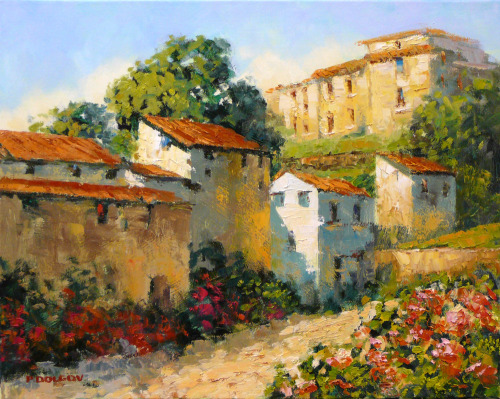

Moreover, while the painting focuses on rural labor, in contrast to the work of the Realists - the French painters Gustave Courbet and Jean-François Millet, for example - Constable's emphasis is less on the figure in the hay-wain than on the natural scene enveloping him, indicating one of the key distinctions between the closely associated movements of Realism and Naturalism.
#European landscape paintings series#
The scene was therefore one familiar from childhood Constable would later state that "I associate 'my careless boyhood' with all that lies on the banks of the Stour those scenes made me a painter." Constable would not, however, have painted en plein air - as became the fashion for Naturalist painters - returning to his studio in London to complete this work based on a series of preparatory on-site sketches. It was the landscape of his birth - to a wealthy family of agricultural merchants in 1776 - and, like various other Constable paintings, The Hay Wain depicts an area of land, Flatford Mill, owned by his father Golding Constable. The landscape is that of East Bergholt in Suffolk, part of an area of south-east England, straddling Suffolk and Essex, now referred to as 'Constable country', in recognition of the artist's rich body of work produced in response to it. The horses seem to have paused mid-crossing, as if to better present the scene to the viewer, and as the eye glosses the painting it is drawn inward by the soft curves of the river-banks, invited to linger over various details: the dappled reflections in the water, the foliage of the trees, and the sunlit depths of the field beyond, where a group of haymakers can just about be made out at work.

This quintessential early work of Naturalist landscape painting depicts a hay-wain - a type of horse-drawn cart - being led across a shallow river by an agricultural worker perched on its back.

But whereas the general effect of this new technology was to force painters into other areas of creativity than the lifelike representation which the camera could achieve in minutes, Naturalist painters took on the new medium on its own terms, creating works of hypnotically lifelike effect which were unparalleled in art history.


 0 kommentar(er)
0 kommentar(er)
